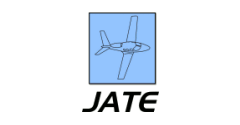Abstract
Conventional Mach-independent subsonic drag polar does not replicate the real airplane drag characteristics exactly and especially not in the drag-divergence region due to shock-induced transonic wave drag. High-bypass turbofan thrust is a complicated function of many parameters that eludes accurate predictions for the entire operating envelope and must be experimentally verified. Fuel laws are also complicated functions of many parameters which make optimization and economic analysis difficult and uncertain in the conceptual design phase. Nevertheless, mathematical models and predictions have its important place in aircraft development, design, and optimization. In this work, airspeed-dependent turbofan thrust and the new fuel-law model were used in combination with an airplane polynomial drag model to estimate important performance speeds. Except for the airframe-only dependent control airspeeds, all performance speeds are airframe powerplant dependent. In all analytical considerations one ends up with polynomials of the 4th order that have no closed-form solutions. A real positive-root seeking numerical procedure based on the family of Newton-Raphson methods was used to extract performance airspeeds for variable in-flight weights and altitudes in the ISA troposphere. Extensive testing of the accuracy and convergence of the Newton-Raphson nonlinear equation solvers was conducted before performance speed calculations. A fictitious long-range wide-body transport-category airplane was modeled in combination with a pair of high-bypass and ultra-high bypass ratio flat-rated turbofans. Procedure employed here can be easily extended to cases when fitted, measured drag and thrust data is given in arbitrary polynomial forms. Sensitivity analysis is performed on minimum-drag airspeed and maximum aerodynamic efficiency. Transonic wave drag considerations are introduced.
Recommended Citation
Daidzic, Nihad E.
(2016)
"Estimation of Performance Airspeeds for High-Bypass Turbofans Equipped Transport-Category Airplanes,"
Journal of Aviation Technology and Engineering:
Vol. 5:
Iss.
2, Article 4.
Available at: https://doi.org/10.7771/2159-6670.1122
Included in
Aerodynamics and Fluid Mechanics Commons, Management and Operations Commons, Numerical Analysis and Computation Commons, Propulsion and Power Commons


